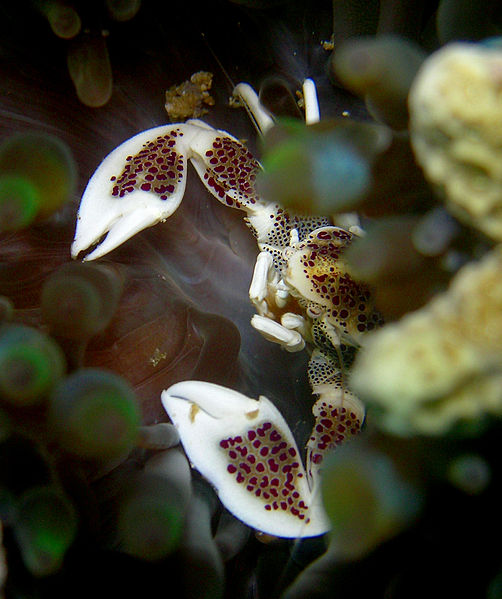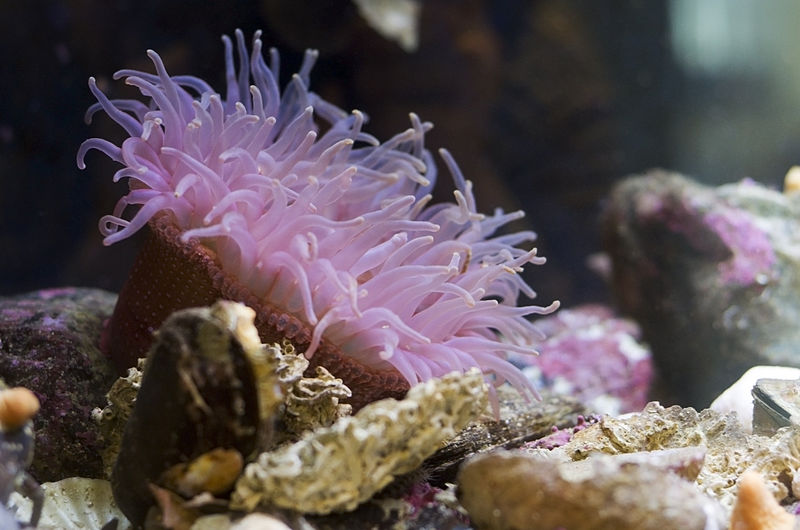Adaptations
WHAT ARE SOME WAYS THE SPOTTED PORCELAIN CRAB HAS ADAPTED TO THE PROPER HABITAT?
One of the very first things people notice when looking at a Spotted
Porcelain Crab is the beautiful coloration and unique pattern of
spots on the body and legs.
 The
Spotted Porcelain Crab composition is made up of an orange, white
body with deep brilliant red spots sometimes outlined in violet. As
with all other organisms, the coloring of the Spotted Porcelain Crab
is used for a special purpose. This organism mainly uses the
coloration as a camouflage technique. Alongside the unique
coloration, the amonefish (also referred to as the
Spotted Porcelain Crab) are considered to have a protective mucous
coat that acts as “chemical camouflage” or “macromolecular mimicry”
preventing “not-self” recognition by the sea anemone (Mebs, 2009).
The
Spotted Porcelain Crab composition is made up of an orange, white
body with deep brilliant red spots sometimes outlined in violet. As
with all other organisms, the coloring of the Spotted Porcelain Crab
is used for a special purpose. This organism mainly uses the
coloration as a camouflage technique. Alongside the unique
coloration, the amonefish (also referred to as the
Spotted Porcelain Crab) are considered to have a protective mucous
coat that acts as “chemical camouflage” or “macromolecular mimicry”
preventing “not-self” recognition by the sea anemone (Mebs, 2009).
HOW DOES IT MOVE, IF AT ALL?
Another adaptation that sets the Spotted Porcelain Crab apart from the others is the last pair of legs. The last pair of legs are noticeably smaller than the others, and are often times hidden within the body cavity. This makes the Spotted Porcelain Crab appear to have 6 walking legs and 2 claws, while many other typical crabs have 8 noticeable legs (British Broadcasting Corporation, 2010). The legs do not do the Spotted Porcelain Crab great advances, since it is a filter feeder. It does not have to search very hard for food, because with the protection of the sea anemone, it can relax and feed as needed.
HOW DO THE STRUCTURES RELATE TO THEIR FUNCTION IN THE APPROPREATE ENVIRONMENT?
There are multiple structural factors that limit the Spotted Porcelain Crab from functioning in the appropriate environment. One factor being the actual size of the Spotted Porcelain Crab. Due to the fact that it is not much larger than a Christmas tree light bulb, it is limited to traveling in far distances. To accommodate for this limitation, the Spotted Porcelain Crab stays within the protection of the sea anemone. Another limiting factor is the bright coloration. If the Spotted Porcelain Crab were to go outside the safe perimeters of the sea anemone, it would be picked up by predators in an instant. Outside the sea anemone, there are minimal organisms that the Spotted Porcelain Crab could blend in with.
Click here if you would rather return home.
